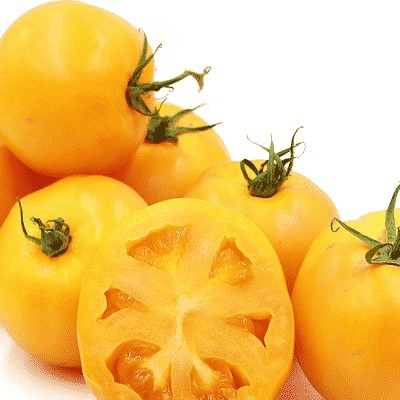
- Name synonyms: Summer Sun
- Category: grade
- Growth type: indeterminate
- Appointment: fresh consumption
- Ripening period: mid-season
- Ripening time, days: 115-120
- Growing conditions: for film greenhouses
- Bush size: tall
- Bush height, cm: 200 and above
- Stem: strong
The Summer Sun tomato variety is grown mainly in film greenhouses. It belongs to the indeterminate varieties. This variety is also called Summer Sun.
Description of the variety
Healthy adult bushes of such tomatoes can reach a height of 200 centimeters or more. Their stems are quite strong, leafy plates of the potato type. Most often, the variety is grown for fresh consumption.
The main qualities of the fruit
The fruits have an amber-golden color. The size of the cherry vegetables. Each of them weighs about 25-30 grams. The shape of the tomatoes is round. One brush contains 7-8 small vegetables.
The pulp of ripe fruits is sugar and fleshy. The skin on them is quite strong and dense.
Taste characteristics
The taste of ripe tomatoes of this variety is sweetish with light fruity notes and sourness.
Ripening and fruiting
Summer Sun is a mid-season variety. The ripening period is about 115-120 days. The type of fruiting is long. Harvesting takes place until October.
Yield
Summer Sun is considered a high-yielding variety. From one healthy adult bush, it will be possible to collect 2-3 kilograms of ripe vegetables, from 1 square meter of territory up to 6-7 kilograms of tomatoes are collected.
The timing of planting seedlings and planting in the ground
Sowing seedlings should be carried out from the second decade of March to mid-April. Young plants can be planted in the ground if there are 6-7 leaves.

Growing tomato seedlings is an extremely important process, because it largely depends on whether the gardener can harvest at all. All aspects must be taken into account, from seedbed preparation to planting in the ground.
Landing scheme
Three bushes should be planted per 1 square meter of territory. In this case, the distance between the landing holes should be 50-60 centimeters.

Growing and care
When sowing seedlings, it is better to first treat the seeds with disinfectants. At the same time, you should prepare containers for planting and an earthen mixture. The soil can be made independently by mixing soil from the garden, sand and peat, or it can be purchased ready-made in a garden store.
The earth is poured into containers, and then the seeds are carefully laid out on top, deepening them a little. When the first leaves appear, the vegetation begins to be planted in a permanent place. This is most often done in plastic greenhouses.
Landing holes are dug in advance. Plants are carefully removed from containers and lowered into pits. Previously, it is better to fertilize them with substances with a high content of potassium and nitrogen. Sprinkle the roots with earth. All this is well watered.
In the future, young bushes will need proper care. Plants need to be watered periodically. It should be remembered that the culture does not like too moist soil.There should be about 4 liters of liquid per 1 square meter; during the flowering period, the amount of water should be increased. Watering is carried out every 5-7 days. After planting, the procedure is carried out only after 10-12 days.
It is recommended to use a slightly warm liquid for moisturizing. In this case, water must be poured only at the root, it should not fall on the leaf plates and the stem. Otherwise, sun exposure may cause burns on wet parts of the plant.
And also tomatoes will need feeding. Fertilization should be started from the moment the first ovary is formed. It uses mullein, superphosphate and wood ash.
Liquid nutrient fertilizers are a good option. So, you can collect plant residues, often take nettles. They are filled with warm clean water. The container with all these contents is covered with a lid. You can also add mullein there. The resulting infusion can be used for both foliar and root feeding.
In addition, Summer Sun will need a garter, pinning (stepchildren are removed when their length is at least 1-2 centimeters) and the formation of a bush.
Reviews
Many gardeners spoke positively about tomatoes of this variety. Separately, it was noted that this variety has excellent taste characteristics, it has an unusual sweetish taste.
And also some gardeners noticed that Summer Sun is a productive species, it allows you to get a bountiful healthy harvest. It was noted that ripe fruits have good keeping quality.




A plant needs different micronutrients at each stage of growth. All fertilizers can be divided into two groups: mineral and organic. Folk remedies are often used: iodine, yeast, bird droppings, eggshells.
It is important to observe the rate and period of feeding. This also applies to folk remedies and organic fertilizers.



























































































